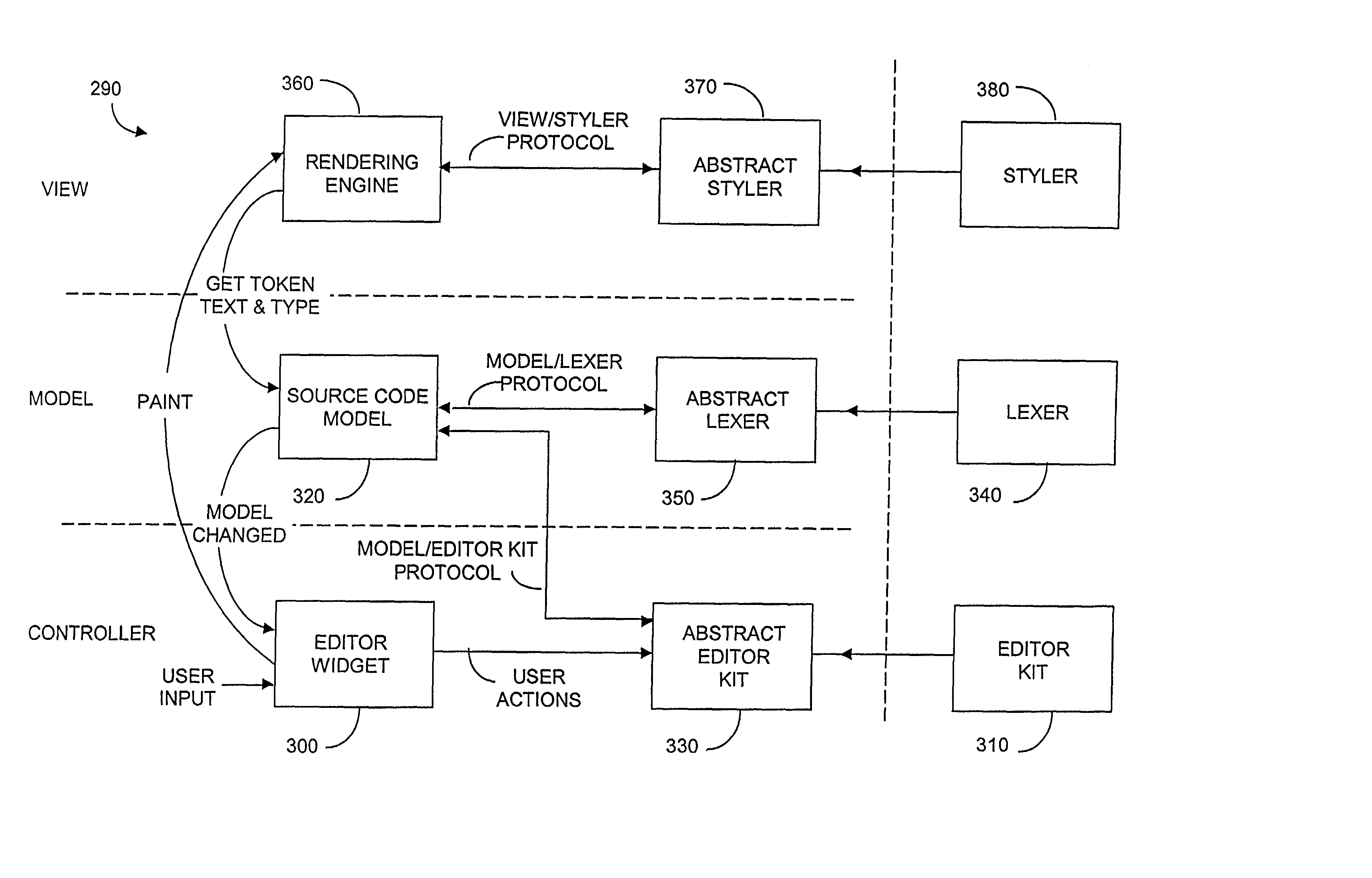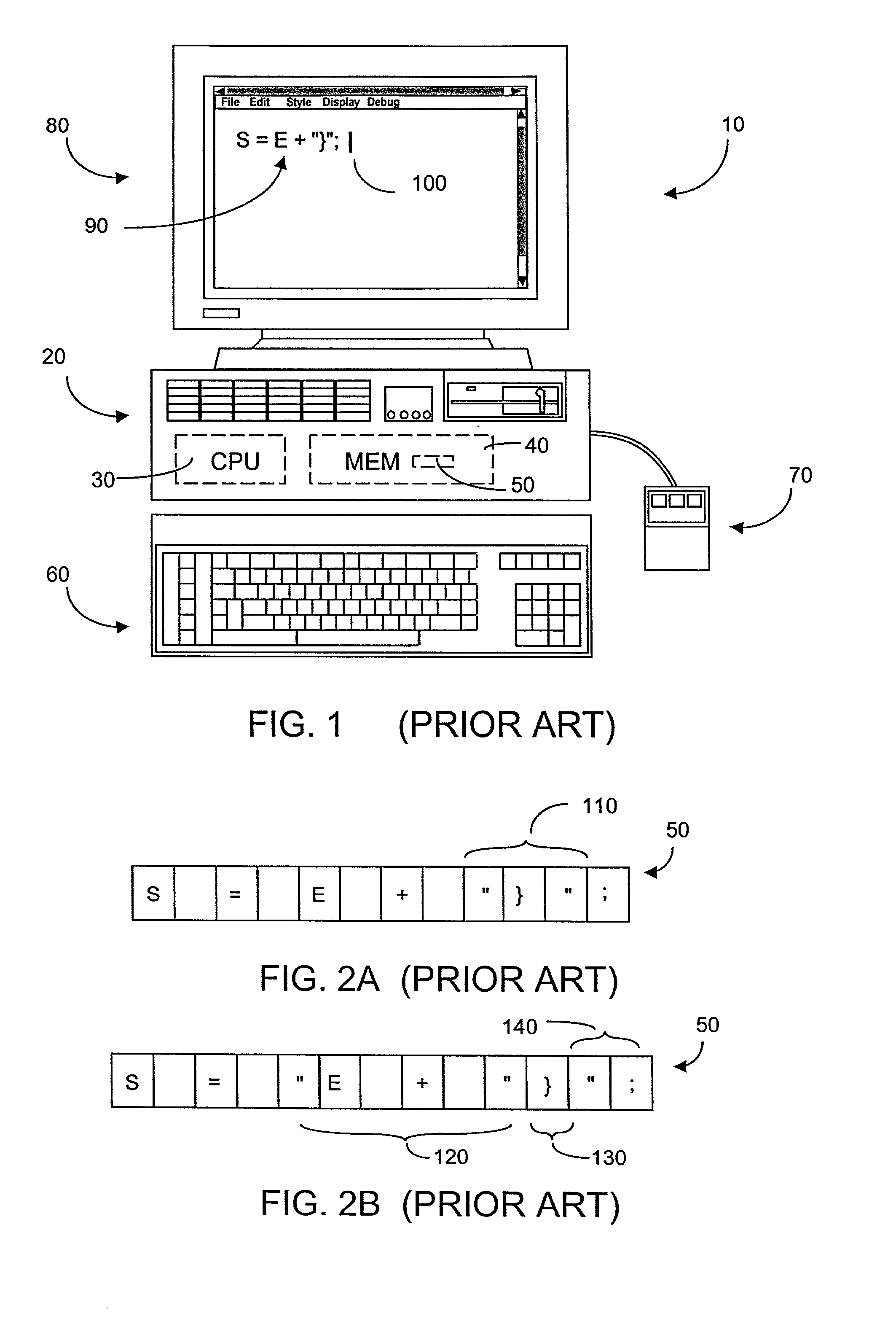Source code plays a major role in most
software engineering environments, yet it has always been difficult for software engineers to interact with such code.
A common problem encountered by programmers when interacting with
source code is that prior art program editors, while often language-sensitive, build upon fragile representations that are ill-suited to the manipulation of multiple embedded syntactic structures, for which behaviors would ideally be defined in accordance with distinct lexical rules.
As a result, such prior art program editors are typically limited in their specialization of behaviors and those specialized behaviors provided often exhibit
instability in the face of interactive edits.
As will now be described, a particularly common
instability often results in confusing language-based display (e.g., text formatting or pretty printing, linguistically-driven typography, etc.) and can result in the loss of previous linguistic analysis of program structures being entered.
Unfortunately, associations between particular contents of text buffer 50 and appropriate stylistic rules are typically quite fragile, particularly in the presence of editing operations.
Accordingly, if provided, language-based display (e.g., text formatting or pretty printing, linguistically-driven typography, etc.) is somewhat unstable in prior art editor designs.
Typically, such editor systems are unable to properly
handle display of text buffer 50 contents after entry of an initial double quote character " that is intended by the
programmer to signify start of a new string literal.
Unfortunately, such inappropriate visual cues can be quite distracting to the
programmer.
However, in general, a keystroke-by-keystroke interpretation of a given edit may result in an ever changing (and distracting) set of visual cues such as color,
typeface or other typographic attributes.
While many prior art editors exhibit such inappropriate behaviors, others may simply forgo otherwise desirable language-based features such as advanced program typography or
lexical analysis on a keystroke-by-keystroke basis because of the challenges created by interactive edits.
In practice, this assumption has not been borne out and structure editors have not found wide acceptance.
Some structure-based editors allow uses to "escape" structural constraints by transforming selected tree regions into
plain text, but
usability problems persist.
The complex unseen relationships between textual display and internal representation make editing operations confusing and somewhat unpredictable because of "hidden state."
In some ways, textual escapes make matters worse with a confusing and distracting distinction between those part of a program where language-based services are provided and those where they are not.
Unfortunately, due in large measure to practical user acceptance and deeply ingrained motor learning habits that involve textual, rather than structural editing, practical code-oriented text editors emphasize a textual representation.
But, by definition, the structural information computed by simple text editors is incomplete and imprecise, and such editors cannot
support services that require true linguistic analysis such as advanced program typography.
Although high quality, linguistically-driven typography can measurably improve the programmer's reading comprehension, such typography is often lacking in prior art source code editors, especially when encountering malformed and fragmentary
program code.
Although a few text editors can perform per-line
lexical analysis with each keystroke, the absence of true program representation leads to
confusion in the inevitable presence of mismatched string quotes and comment delimiters.
 Login to View More
Login to View More  Login to View More
Login to View More 


